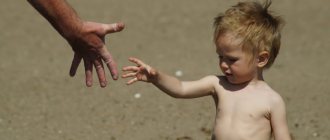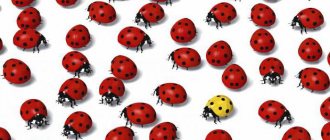What is deviant and delinquent behavior?
The state has always normalized the behavior of citizens, placing it within the framework of the law. In addition, in each social group (ethnic, religious or other) there are rules of behavior enshrined in traditions or oral agreements.
Attention! People's actions are compared with “written” (formally enshrined laws of the state) and “unwritten” rules (informal behavioral norms).
Examples of informal rules:
- customs and traditions;
- manners and etiquette;
- behavior that is considered decent by mutual agreement of a closed community.
Violation of the informal framework of social behavior is called deviant. Actions associated with deviations from formal laws are called delinquent.
How are they different from each other?
There are differences between two types of non-standard social behavior: deviance and delinquency. Deviant deviation from behavioral norms is a relative concept.
As the popular saying goes: “Everyone has his own taste and his own manner: some like a watermelon, some like an officer.” What is considered abnormal for some people is normal for others.
For example, representatives of Turkic peoples (Kazakhs, Kyrgyz, etc.) eat the national dish beshbarmak with their hands, sitting on the floor. The manners of aristocrats, on the contrary, oblige them to eat while sitting at the table, using cutlery.
Different concepts about proper eating
The delinquency of an individual is absolute. In this case, there can be no two opinions. Violation of the norms of social behavior prescribed by law is punishable. Murder, violence, robbery, theft, fraud - this is just a short list of delinquent manifestations.
Example. Among the gypsies, theft and fraud are considered one of the ways to earn money. In their circles this is normal, but this is a violation of articles of the law of the Russian Federation, and there can be no talk of relativity here.
Difference in Concepts
The problem of antisocial behavior
Delinquent (from the English delinquency - crime, offense) behavior is a special case of the broader concept of deviant (deviant) behavior, which has long been known in psychology and has been subjected to comprehensive study. The variety of reasons for the occurrence of this phenomenon and the consequences to which it led was the reason to single it out as a separate area of study. To better understand the mechanisms, the help of specialists in sociology, pedagogy, criminology and other related sciences was required.
The main sign of delinquency
In the process of development of society, a set of religious, moral, ethical and behavioral norms has been formed that regulate the comfortable coexistence of people in society. Some of them have received mandatory status in the form of laws, the observance of which is monitored by the state. And the other exists as a set of unwritten rules, the violation of which causes public censure. Deviation in this sense is any deviation from the norm , regardless of whether it falls under the definition of a crime or not.
The subject of deviant behavior is a person or society as a whole. The action in the Cathedral of Christ the Savior, organized by Pussy Riot, is a vivid example of this. The political speech “Virgin, Mother of God, drive Putin away” in the form of a dance at the Holy Throne offended the feelings of believers, violated work regulations and looked like blasphemy, but at the same time it fell under the article of hooliganism with a very big stretch, as prominent representatives of the Bar Association pointed out in an open letter published in the media.
However, in society, which received a formal spit in its direction, there was an opinion that punishment for such defiant behavior was necessary. The anti-government component of the action was emasculated, and it itself was turned into a hooligan prank aimed at creating cheap PR.
While remaining a deviation, speech turned into a tort (an act of a criminal nature). And such an offense is already subject to criminal prosecution, because delinquent behavior is always a violation of the legislation of the state in whose territory it occurs.
Dependence on external conditions
In psychology, this concept is viewed differently, and some scientists also include offenses that are not directly related to the crime. But they always violate written guidelines, be it the Criminal Code, the administrative code, the school charter or safety regulations. And because laws are subject to change, the same action may or may not be a tort. The 1960 Speculation and Currency Fraud Act defined these acts as manifestations of delinquent behavior, and after 1991, under the new economic conditions, they became the norm.
There is a direct dependence on the culture dominant in each particular state. Such a widespread sexual deviation as homosexuality is perceived far from unambiguously in history and in the modern world. In ancient Greece, these relationships were considered almost an obligatory norm for a citizen of Athens, a homey of Sparta, or at the court of the Macedonian kings. And today in a number of Muslim countries this can result in a death sentence, in others - in prison, despite the fact that in Europe and the USA the reaction fluctuates between a neutral position and the norm.
Examples of delinquent behavior are especially common in states where revolutions are taking place or global reforms are being implemented. The old norms of life have already been abolished, and the use of new ones has not yet taken root in the consciousness of the population, which automatically becomes the leading factor in the growth of criminal relations between people. As an illustration, it is enough to recall the rampant banditry in Russia in the nineties to appreciate the scope of possible deviations.
Types of torts
The main difference between antisocial manifestations is considered to be harm caused to oneself, another person, a group of people or society as a whole. The denial of social values and the consequences of this manifest themselves with varying degrees of aggressiveness . There are 4 types of delinquent behavior:
- Addictive, which is characterized by a departure from reality into the world of distorted concepts and addictions (alcoholism, drug addiction, sectarianism, gaming, sexual, computer addictions). In this case, mental and physical health and social ties with society are destroyed.
- Violations of discipline, which is expressed in non-compliance with the schedule, tardiness and absenteeism, appearing at work or school while drunk, and refusal to perform one’s duties.
- Administrative violations. Obscene language in public places, demonstrative drinking of alcoholic beverages, violation of traffic rules, etc.
- Crimes when the law is violated (theft, murder, rape, robbery, etc.) and for which criminal punishment is provided.
Their significance varies depending on age. If for adults these types are random or stable, then in adolescents there is a tendency to intensify delinquency.
Characteristics of deviant behavior
Deviant behavior - what is it?
There are differences between deviant and delinquent behavior; the very concept of “deviation” has a broader meaning. It involves any deviations that go beyond both written and unwritten norms.
Such deviations are characterized by the following points:
- a clear discrepancy between a person’s behavior and generally accepted or official requirements;
- individual actions are assessed by society as negative;
- have a persistent, repetitive nature;
- are destructive;
- are not considered a mental illness from a medical point of view;
- associated with social inability, in various forms of its manifestation;
- are exclusively personal in nature or depend on the stage of puberty.
In any case, deviation is a person’s lack of ability or desire to find his place in society in such a way as to meet its requirements.
Depending on whether deviation brings benefit or harm to society, two types can be distinguished:
- constructive;
- destructive.
In the first case, deviation is encouraged and rewarded. The actions of heroes, geniuses and leaders are approved by society. In the second case, actions are not welcomed by society and are considered harmful and destructive. As a result, the person is punished in the form of conviction, isolation or treatment.
Deviation as a form of deviation
Similarities and differences between the terms “deviance” and “delinquency”
Common features of deviance and delinquency:
- both terms imply deviation from generally accepted social norms. At the same time, people’s actions are compared both with legally established state norms and with informal behavioral guidelines;
- Both deviation and delinquency imply a person’s lack of desire to find his place in society, meet its requirements and comply with generally accepted rules.
If we talk about the differences between these terms, they are as follows:
- Delinquent behavior is human behavior that includes completely illegal actions. Vivid examples of delinquent behavior can be robbery, murder, any violent acts, fraud, and bullying. Delinquency includes primarily those deviations that carry legal consequences;
- Deviance is a broader concept that includes generally accepted deviations from socially approved norms.
In a narrow sense, deviant behavior may include offenses that do not entail criminal liability, and delinquent behavior may include administrative fines and criminal punishment.
Causes of delinquency
Deviant behavior in adolescents - what does it mean in a child?
To find out the reasons for antisocial behavior, it is necessary to consider the development of personality from childhood.
Important! It is inappropriate to apply the definition of deviant behavior to children under five years of age.
In a child over 5 years old, internal mental functions begin to form only after external ones have been formed. Observation of adults helps the child to initially assimilate the social model of society. At the first stage of life, these are his parents. By watching them, the baby becomes familiar with the following social achievements:
- higher psychological functions;
- values to be guided by;
- norms and rules of conduct.
Parents must teach their child the mechanisms of identification and separation that regulate human behavior.
For your information. Identification is identifying oneself with other people, a group, a model that one can look up to. Isolation is the desire to become an individual and stand out from the general plan.
It is not for nothing that the first point of social achievement is higher psychological functions (HPF): perception, thinking, speech and memory. In other words, parents are obliged to help the child transfer and link the model of behavior in society to his internal plan (individual model of behavior).
The reasons that disrupt the course of these internal psychological transformations in childhood include the following points:
- lack of parental care and parents ignoring manifestations of children's affection;
- conflicts between parents in front of their children;
- complete lack of education, leaving the child to his own devices;
- children's permissiveness (spoiledness).
In addition, the cause may be psychological trauma suffered by the child.
Spoiled child
Deviant behavior of children
Problems in upbringing, disobedience and aggressive aspects of behavior force parents to think about the mental state of the child at an early age.
The causes of deviant behavior in children are quite diverse:
- Biological – include intrauterine lesions (toxic effects, asphyxia, etc.), hereditary diseases that provoke delays in physical and mental development, and damage to the nervous system. This also includes somatic and mental disorders received by the child in the first years of life (traumatic brain injuries, frequent stress, etc.).
- Social – reflect different levels of ill-being of the surrounding people. This includes alcoholism of relatives (for example, a young family lives in the same apartment with a drinking grandfather), excessive conflict, and domestic violence. All this provokes the child to adjust his behavior in accordance with antisocial norms. An incomplete family can also influence deviant behavior, since the child has a deficit of role and behavioral reactions that should be borrowed from the corresponding family member.
- Pedagogical - this includes the abuse of prohibitions, lack of explanations for punishments, which in turn causes a protest reaction on the part of the child. Also, deviant behavior develops as a result of a standardized approach to treating children in preschool and school institutions, where individual characteristics are not taken into account.
- Psychological – features of upbringing in the family that adversely affected the emotional-volitional sphere of the child, for example, upbringing according to the “family idol” type, hyper- or hypoprotection, domestic violence, parental alcoholism. Psychological reasons also include a violation of attachment to adults.
If there are medical indications, then therapy should be carried out as early as possible. In the case of social and pedagogical reasons, it makes sense to think about changing the strategy of adult behavior.
In the same way, psychological reasons require immediate correction. If deviant behavior is ignored in childhood, then it is consolidated and becomes more stable, flowing into adolescence.
Types of antisocial behavior
Suicidal behavior - what is it in psychology
The lack of ability to socially adapt is expressed in the use of illegal means to achieve goals. For example, in order to achieve a good social position, power, wealth, without being able to achieve this by legal means, a person transgresses morality and the law.
The lack of desire to live according to social norms is expressed in open protest, demonstrative disobedience: this is extremism, terrorism and other forms of rejection of social values.
From this point of view, it is possible to distinguish several types of violations as a result of antisocial behavior:
- immoral;
- addictive;
- illegal;
- criminal.
Vagrancy, prostitution, promiscuity, belonging to sexual minorities are signs of an immoral human lifestyle. Addictions that result in a member of society withdrawing from reality (drug addiction, alcoholism, gambling addiction, etc.) are directly related to addictive behavior. Hooliganism, petty theft, robbery, insults, and theft of vehicles for entertainment are considered illegal actions. Criminal behavior refers to actions that are punishable by law.
Manifestation of antisocial behavior
Forms of delinquent behavior
Delinquent behavior exists in many forms, but the most common and severe are crime, drug addiction and prostitution.
When studying crime, researchers consider many factors that influence its dynamics. Among them: occupation, social status, level of education, degree of a person’s involvement in public life. Crime has a declassing factor; it means a weakening or complete destruction of the relationship between an individual and a social group. The question of the relationship between social and biological factors that influence the formation of preconditions for criminal behavior in a person is also being studied. Crime always exists and, perhaps, unfortunately, will exist in society; it cannot be eradicated, at least for now. A person is either born with genes in which he has a predisposition to commit crimes, and it can develop and manifest itself under the influence of certain factors, or the conditions of society and the circumstances of a person’s life push him to commit crimes. Therefore, crime is a kind of reflection of human vices. Perhaps society needs to forget about utopian ideas, about eradicating crime as a social pathology and keeping it at a socially tolerable and acceptable level.
Drug addiction is a very terrible phenomenon, because this scourge has destroyed a huge number of human lives and kills new victims every day. Drug addiction makes great sacrifices to society, and the full severity of its consequences is reflected on the individual himself, the quality of his life and his loved ones. And all the time people hope that they will find an effective way to combat it and, even more so, prevent it.
Sociological studies demonstrate results that reflect the main motives for drug use - the desire to experience special sensations and the thirst for euphoria. As statistics show, the majority of novice drug addicts are young people, even teenagers, and due to the peculiarities of their growing up, the restructuring of the hormonal system, they experience vague sensations, and in order to calm the raging feelings, they begin to look for different ways of relaxation, among the most Popular ones are smoking, alcohol and drug addiction. Immaturity, frivolity, company influence and carelessness were decisive factors in the emergence of addiction. Most drug use among young people occurs within a group, sometimes the only thing that unites these people is drugs, and not other common interests that are socially acceptable. Many drug addicts use drugs in crowded places, for example, on the streets, in a cinema, on the beach, in the yard; sometimes they want to take a dose so much that they don’t care where they are. Social, economic and cultural measures can be used against drug addiction, but medical, psychological and legal measures have the greatest impact.
Prostitution is also a form of delinquent behavior, but in some countries of the world they do not talk about it like that, it is equated with ordinary work. Prostitution is understood as the process of sexual relations with a person with whom they are not married and do not have love feelings or sympathies, and receive payment for them. It is important to distinguish that prostitution is neither extramarital sexual relations nor mercenary marital relations if the individuals sympathize with each other. The emergence of prostitution is associated with the distribution of labor, the development of megacities and monogamy. In our society, the fact of the presence of prostitution has been hidden for a very long time, and such a long concealment, and then exposure, has led many people into a state of horror. But what is forbidden always arouses unhealthy interest. It is known from history that there were three forms of policy towards prostitution. Prohibitionism is a ban, abolitionism is explanatory and educational work for preventive purposes, with the absence of prohibitions and registration and regulation, that is, registration and medical supervision. Then they evaluated all three methods and came to the conclusion that the bans had no impact, and the repressions were ineffective, and neither legal nor medical regulation could influence the eradication of the problem of prostitution.
Features of delinquent behavior in adolescents
The adolescent delinquent form differs from its manifestation in other age intervals. Adolescents are prone to exhibiting two types of delinquent behavior:
- selfish;
- violent.
Selfish actions are sometimes committed out of curiosity or because of the incompleteness of a child’s character. Such a teenager can take a cell phone from a junior high school student, steal a motorcycle or car from the yard, and then he himself cannot really explain why he did it.
Violent actions and aggression can distinguish a teenager who wants to assert himself. Under the influence of the herd instinct, from a lack of education or a “sense of duty to friends,” boys get involved in “showdowns” and gather in bad company. Over time, young people become uncontrollable: they are rude to adults, disobey their parents, and run away from home.
By the way. Prosperous families, as well as dysfunctional ones, can have such a teenager. Moreover, guys from good families, succumbing to bad influences, try to win the attention of girls in this way, sincerely believing that resemblance to the image of a “bad guy” will help them in this.
If we consider the reasons that influence the occurrence of antisocial behavior in adolescents, we can note the following:
- influence of youth subcultures (goths, emo, punks, etc.);
- poor upbringing and a negative example of the life of parents, causing distortion of the psyche in childhood;
- fanaticism associated with sports and resulting in aggressive antisocial behavior;
- psychological addictions;
- physical problems due to illness.
The impossibility of self-affirmation in society through accessible ways: abilities, talent, achieving material independence in a legal way can also be added to this list.
Football fans and riots
Typology and causes of delinquency
Delinquent behavior refers to illegal acts aimed at causing harm to any people or society.
A qualitative typology of forms of delinquency can be carried out based on the violated branches of law and the degree of risk to society. Formally, torts are divided into several categories:
- Civil law. This is the infliction of moral or property damage to an individual or legal entity, for example, discrediting a person’s reputation, etc.
- Administrative ones are expressed in violation of administrative laws regulated by the state and its subjects: begging, smoking and drinking alcoholic beverages in unspecified places, etc.
- Disciplinary - offenses characterized by non-compliance with articles of the labor code: showing up at work while drunk, absenteeism, deliberate damage to the employer’s property, etc.
- Criminal offenses consisting of activities contrary to the criminal legislation of the country: fraud, robbery, hooliganism, theft, rape, murder.
Often the environment that gives rise to an antisocial attitude accompanies an individual from childhood and contributes to the emergence of deviant and delinquent behavior in adolescents.
These factors include the following:
- traumatic experiences provoked by parents ignoring the child’s needs for affection, care and tenderness;
- repeated use of psychological or corporal punishment;
- difficulty in developing a moral consciousness due to lack of paternal influence;
- fixation on the circumstances of acute trauma at an early age;
- indulgence of children's whims, lack of parental demands;
- intense stimulation;
- lack of clear understanding of the rules due to inconsistent requirements;
- change of guardians;
- constant family quarrels, especially dangerous cases of father’s cruelty towards mother;
- unfavorable personal characteristics - an overly demanding head of the family and an indulgent mother;
- absorption of anti-social values from the outside from a young age.
Mechanisms and strategies for control and prevention
The primary mechanisms of control over deviant and delinquent behavior are considered to be the actions of the school. The school has the following capabilities:
- free access to teenagers' families, cooperation with parents;
- instilling healthy lifestyle skills in schoolchildren;
- impact on the degree of self-esteem of the student and his aspirations;
- organization of leisure activities for schoolchildren and assistance in finding employment during the summer holidays.
The school has the opportunity to attract specialists to prevent delinquency and crime.
Scheme for the prevention of delinquent behavior
Deviations of human behavior in society are deeply rooted in childhood. That is why raising the younger generation requires special attention. “Healthy individuals form a healthy society!” - this slogan should be the basis of all educational work of the younger generation.
Types and forms of deviant behavior in children and adolescents
I would like to include in a separate category children’s and adolescent deviations, which are primarily due to the specifics of the ages themselves. Among the common deviations, the following forms can be distinguished:
- risky sexual behavior;
- self-destructive behavior;
- vagrancy;
- new forms of deviant behavior (involvement in totalitarian destructive sects and other public organizations that manipulate consciousness, terrorism, deviations using the Internet and computer).
According to the direction of deviation, they can be divided into:
- deviations of selfish orientation;
- aggressive deviations directed against the individual (self-destruction);
- socially passive deviations (various kinds of departure from reality).
Within the framework of self-destructive behavior, several more forms can be distinguished:
- hidden and direct suicide;
- disorders of habits and desires;
- eating disorders;
- substance use disorders;
- Personality behavioral disorders in the sexual sphere.
Thus, in adolescence and childhood, deviant behavior is more often manifested by aggression, evasion from school, running away from home, drug addiction and drunkenness, suicidal attempts, and antisocial behavior.
- The most popular deviation of adolescence is dependent behavior.
- It is not uncommon for a person who has not yet formed a desire to escape from reality, from problems and misunderstandings. Perhaps this is the easiest way.
- In addition, addictions can be formed based on the teenager’s desire for adulthood. And the simplest form of adulthood is external copying.
- Another common cause of addiction is the teenager’s desire to establish himself among his peers, gain authority and trust. After all, peers at this age are the main “judges” and “audience”.
Girls in adolescence are more likely to develop sexual deviations. Active puberty is directly related to the development of secondary sexual characteristics, which can lead to ridicule from peers or unwanted sexual advances. In addition, girls often begin relationships with older young men, which promotes sexual activity and various risky and antisocial behaviors.
It is worth noting that deviant behavior of adolescents is not always negative. Sometimes teenagers want to find something new, to overcome stagnation and conservatism. On this basis arise:
- music bands;
- theater companies;
- athletes;
- young artists.
You can read more about the characteristics of deviant behavior in children and adolescents in my work “Deviant Behavior in Children and Adolescents: Causes, Prevention and Correction.”








